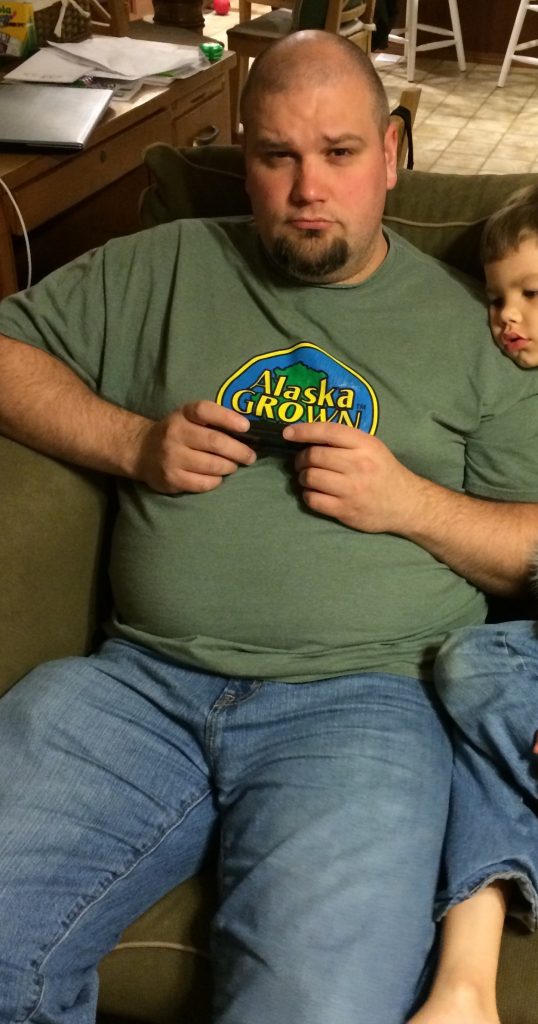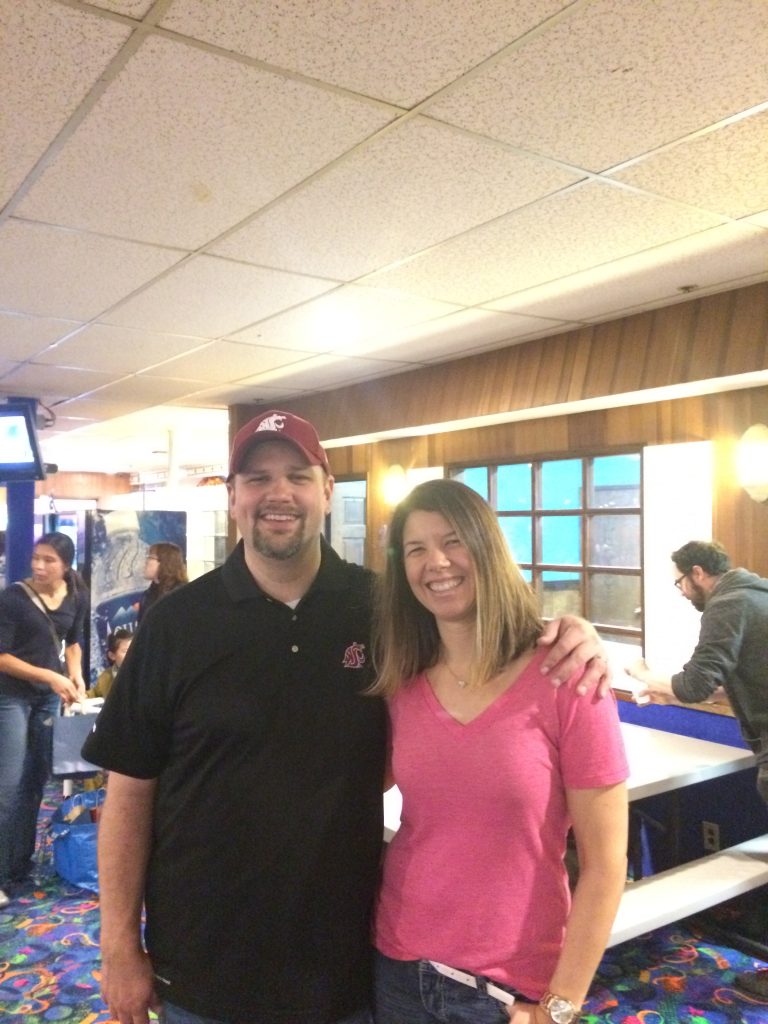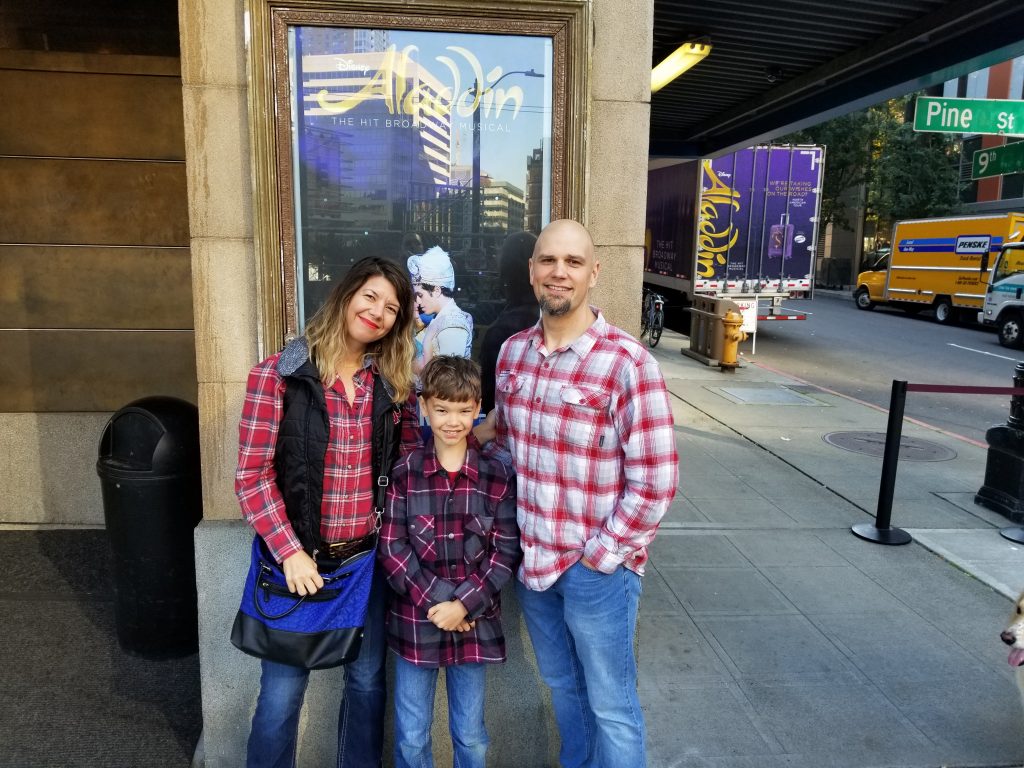It’s Transformation Tuesday again! Today, I am sharing the final guest post written by my husband, Jamey, about his weight loss journey. Over the course of 24 months, he has lost 92 pounds…and he’s still going. Below is the third and final part of this three-part series. You can read the first part here and the second part here. Okay, here’s Jamey…
Let’s just put it out there front and center: Dieting sucks. Dieting is a term that invokes thoughts of deprivation or starvation. It also requires being strong in the face of temptation…or those pesky food pushers.
Being on a diet, for a lot of people, means taking an all or nothing approach to whole categories of food. Am I right? Sugar is poison and should be avoided at all costs. Full-fat dairy clogs your arteries and is the Devil. Carbs, red meat, starches. More Devil stuff. This list goes on and on.
And, on the other side of the coin, the extremes are the same. I should eat nothing but salads, or only protein. Or, I should only consume weight loss shakes. I hear great things about this cleanse or that detox diet.
I want a dollar for every time I’ve had this exchange with someone over the last 18 months:
Person: “Wow, are you on a diet?!?”
Me: “Nope, not on a diet.”
Person: *glassy eyes*
Looking for Long-Term Success
If you recall from Part 1 of this series, I said that I needed to learn how to get my health back on track without being too restrictive, or relying on “crutches” or strategies that were unsustainable. If being healthy required me to cut out all carbs, or put my body into ketosis, what is going to happen to me when I exit those states?
If losing weight requires me to sign-up for and purchase some company’s shake or pre-packaged food, what happens if that company is no longer around?

That’s not to bag on anyone who would use one these strategies, but in my calculation, they don’t seem like strategies for long-term success because they aren’t tools I can reliably leverage for the rest of my life. Honestly, they all sound like recipes for yo-yo dieting, which some studies suggest is worse for you than just being fat.
I don’t use the word “diet” to describe how I eat. To “diet” is to embark on a path that involves making some drastic change to how or what you eat, and at some point you will reach a specific goal. Once you reach that goal, you celebrate and then no longer have to “diet” anymore. For many people, that means you revert back to old behaviors and end up back where you started or, in a great many cases, worse than you started.
For me, changing my health meant I had to relearn what to eat, and why I should eat it. I needed to think differently about how my body uses the food I put into my mouth. That means that I do not “diet.”
Nothing is Off Limits
Here’s something that surprises people: With very few exceptions, I haven’t forbidden anything that I like eating, nor have I given up any broad category of food. The only item I can honestly think of that I avoid, is soda. I was never a drinker of sugary sodas, and like most people who half-ass try to lose weight, I drank the “diet” varieties. A lot of it! Guess what? Diet soda makes you fat, too.
Now, before you start thinking, “Ah-hah! Jamey, that’s being restrictive.” Actually, it’s not. I avoid soda because it simply doesn’t contribute to my goals, not because it’s completely forbidden. There is nothing in a soda that is nutritionally beneficial to what I am working to achieve, or contribute to longevity.
So, I just eat like I used to, and look at me now! Well, no, I don’t eat like I used to.
Changing Habits
I just didn’t know how to eat and had to relearn it. I ate too fast, I ate too much, I ate the wrong things, I ate at the wrong times, I ate the wrong things at the wrong time, but worse of all, I ate for the wrong reasons. When I thought about food, it was driven by taste or gluttony, not how it is used for fuel.
About four months or so after I started walking, I began to think about taking the same approach to eating as I did to exercising. I really didn’t know how many calories I was consuming, or how it measured up to how many calories I was now burning. So I loaded up the MyFitnessPal app onto my phone, entered my vitals and activity level, and how much weight I wanted to lose each week.
At the time I didn’t know why someone should only lose 1-2 pounds per week, but that’s what I entered. I’ve since learned that while, yes, you have to be in caloric deficit, there is this this thing called The Law of Metabolic Compensation, which I may write more about later. (If you can’t wait and want to learn more before then, check The Metabolic Effect Diet, by Dr. Jade Teta and the Metabolic Prime program.)
A Helpful Tool
MyFitnessPal (MFP) spit out my calorie goal, and while I don’t recall what it was, it was way more than the 2000 calories per day than is recommended. I didn’t know why the recommended is 2000 or why it would give you a number beyond that. I guess I sort of expected it to spit out, “2000 calories. Now go get your ass on the treadmill, fatty.” Overanalyzer mode engage. I had to understand why it gave me my specific goal.
I learned all about BMR (Basal Metabolic Rate), and how bigger people just burn more calories. MFP helps you count your calories, compensates for the exercise you do, and makes sure you are in enough calorie deficit to lose weight gradually. This app has the incremental approach built right in! I kept really good track of my food, and while I get how counting calories is a tough task to keep up on, it has helped me understand food labels better, and as a result I can do this pretty easily in my head now.
Every few weeks, as I logged my weight, the calorie number would decrease. As my portions got smaller I started to recognize how badly I overate.
Moderation is Key
In the beginning, I didn’t really change what I ate, however, over time my tastes started changing. I started trying new things, and found new healthier foods that I liked. Foods that I didn’t like before, that were healthier, I now thought were pretty good. Foods that I liked before, started being not that great…or not worth it. (Diet soda?) If there was something that I liked that may not be the healthiest of choices, I can still have it, but it means I have to give up calories somewhere else.
MyFitnessPal made eating the right amount easy. Most importantly, though, I learned that a bite or two of things was not going to derail my goals. Moderation was key, and if I fell off the horse at one meal, I got right back on for the next one. I never beat myself up (much) when I slipped up, and stay conscious about not stringing multiple slip-ups together.

Early on, it was important to celebrate each good meal as a success, and every bad one as an opportunity to jump back on. There is a bonus with MFP in that you get extra calories for exercise, so while I didn’t need additional incentive or a reason to reward myself, it sure came in handy on those days where you do slip up a little. I never treated the bonus calories as a reason to splurge. I treated them as insurance.
Don’t fool yourself into thinking you can burn enough calories from exercise to have an extra slice of cake. Unless its carrot cake, because vegetables, right? (Kidding, of course.)
Plate Strategies
One other thing that I dusted off from memory that I had leaned (and forgotten) from a number of failed “diets” of the past, was plate strategies. As time went on, I tried more and more to focus of what a properly balanced meal should look like for the average person who isn’t an exercise nut, which I wasn’t at the time. Half of your plate should be vegetables—more veggies than protein, and more protein than carbs.
Portion sizes are important, as well, and smaller plates are a forcing function to help. Lastly, remembering what a portion of protein is (the size or your palm), or a serving of vegetables (size of your fist), carbs (cupped hand), or fats (thumb). Quick tip: Women are generally one of each, and men are two.
In the past 18 months, I can probably count the number of times I was truly hungry on one hand. The hardest part of tracking, or measuring portions, is to do it right away and to be honest with yourself (“This isn’t a good food choice. Just a bite or two and that’s it”), and then track it honestly.
If it helps to have a kitchen scale, then by all means, go get one. We have the OXO Food Scale and use it frequently. It’s not going to help you if you go out to eat at a restaurant, or during a family Thanksgiving potluck, so learning what is in food and how much to have is critical. Use MyFitnessPal, use a kitchen scale or measuring spoons, but pay close attention, so you won’t always need them.
Food as Fuel
I no longer look at food as a comfort, or as a source of happiness or escape. I look at it as a source of fuel to run my engine and feed my goals. Yes, I still eat sweets, sugars, and carbs, and anything I want as long as it’s the right amount. I still have cravings. I just know how to do it in moderation now. I no longer log my food on a regular basis, or count calories or macros. If I need a refresher, I’ll fire up the app, but it happens less and less and that, to me, feels like success.

Setting Goals
A health journey should be about each step on a path that has no end.
As I described last week, there is a pretty simple formula to getting onto your path, and then staying there. Taking the first step, and then building on it incrementally. Don’t get too focused on long-term goals. Focus on small goals; today’s workout, the next meal, eliminating whatever is causing you stress or preventing you from sleeping well.
I’ve discovered that everyone who has health goals—even those ripped guys and gals you see on that website with all of the overwhelming exercise and diet information—they all have fitness and nutrition goals. What separates those who are successful at it from those who aren’t is that the most successful people seem to be the ones who focus their energy on the next step.
Have a big goal, but don’t let it distract from the small steps it takes to get there. If you are thinking about the next workout, the next meal, or the next 5 pounds, then your journey has always just begun.
Continuing Health and Fitness Education
Thank you to my beautiful wife for being my inspiration and my rock. It was important to her that I got healthy, and she was incredibly patient while I finally came around. She has been a great source of knowledge and support, and turned me on to Metabolic Prime.
Also, thank you for giving me this opportunity to share the story of how I got started. I don’t know if it will help or inspire anyone to follow my path, but it was my goal to provide hope to anyone who may read this and doesn’t know how to get started—it doesn’t have to be unnecessarily difficult.
I treat each day as another opportunity to eat well and move my body. As is my personality, I’m not done learning. I continue to learn new things almost daily, and as I stated in one of my earlier articles, my goals and activities are different now then when I started.
Maybe that’s why Metabolic Effect is so interesting. It teaches you to figure out what works for you and your metabolism, and to how to put it into practice. I look forward to being able to share some of my new goals and learnings with you in a future post.


2 comments
Nice article! You are an inspiration!
Thanks momma!